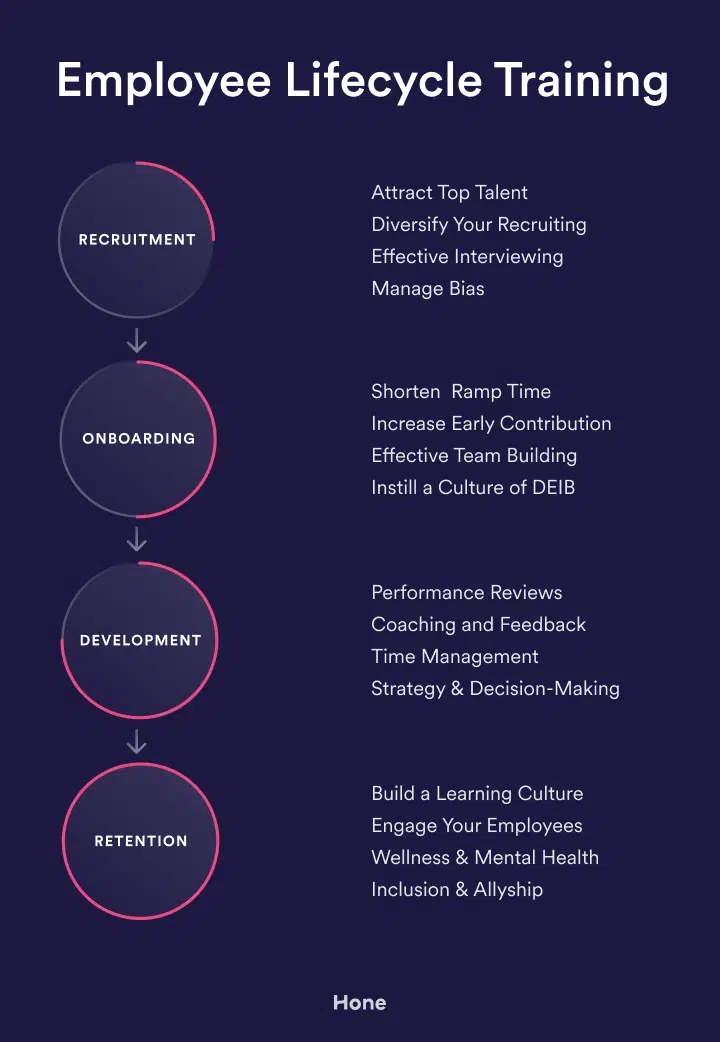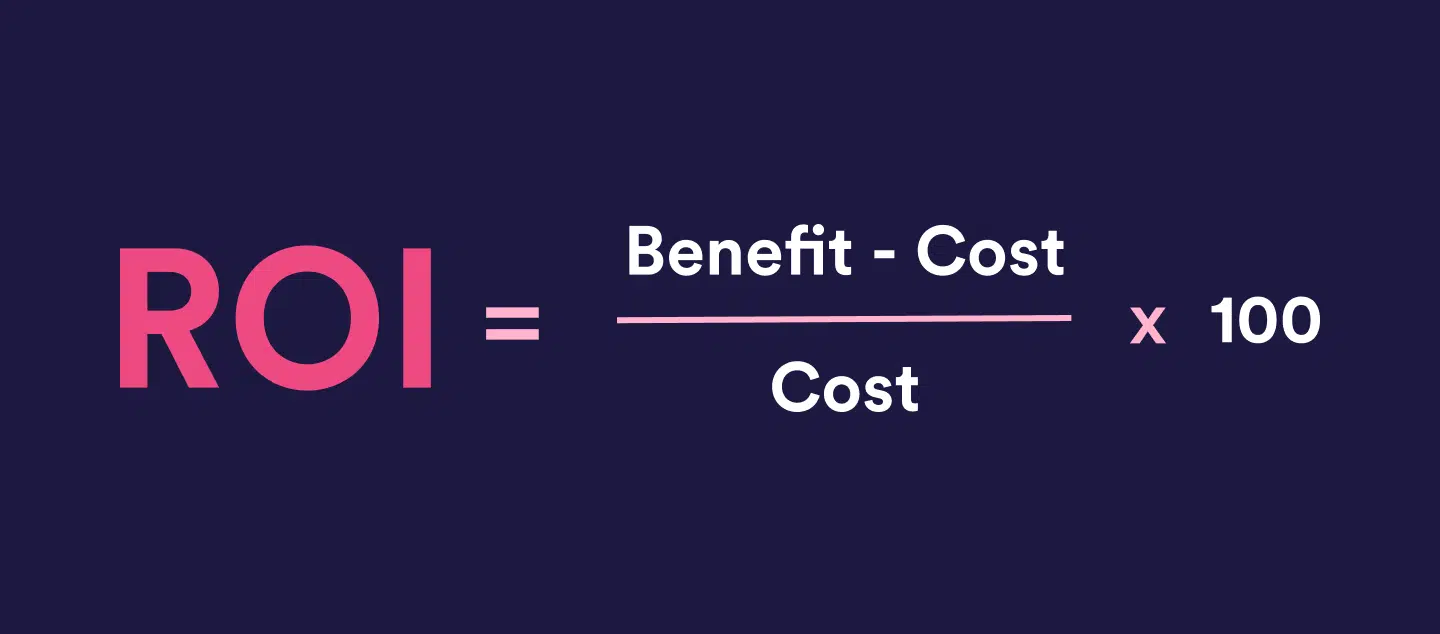When a teammate leaves, they take institutional knowledge and expertise. Unfortunately, recreating that competence isn’t easy—and sometimes impossible—depending on how much they locked away in their head. Moreover, when a new candidate accepts the job, there’s a lengthy onboarding period. They’ll need to ramp up on internal processes and jargon, navigate the company culture, and build credibility and trust with their colleagues and superiors before they’re close to performing at the level of their predecessor. Given those truths, every organization’s top priority is to improve employee retention rates. This blog lists six tips on how learning and development leaders can be crucial in keeping talent happy and getting them focused on growing with the organization.
6 Powerful Tips to Improve Employee Retention Rates in the Workplace
1. Invest in employee development
Of all the tips we’ll share with you today, this is the most self-serving for the company while also beneficial for employees. Employee development is the process of enhancing workers’ skills, knowledge, and abilities. These newly acquired or refined attributes improve employee performance and their ability to meet the organization’s goals and objectives.
For employers, investing in employee development achieves two critical things. First, these employees are now more capable. That should lead to increased productivity, fewer mistakes, and superior performance. Second, it means getting more out of existing staff. Now tasks don’t need to get outsourced or necessitate additional headcount.
For workers, it means they’re learning more skills on the job and the company dime. This should make their current work easier. It also positions them well for promotions within the firm or landing a better job someday.
Learning and development’s training influence
Employee development learning and development offerings run the gamut from leadership and management training to interpersonal skill building to technical training, coaching, and mentoring. But regardless of the specifics, the ROI for these programs should be apparent.
Employee development works when workers can accomplish more in the same amount of time, improve the quality of their work, and feel happier and more engaged with their job. Some of these improvements can be quantifiable—such as a factory line improving output or a sales team increasing bookings. Others may be better measured with employee satisfaction surveys or lower employee turnover rates. Here is a quick ROI training formula:
2. Foster a positive work culture
Our workplaces—be they in-person, remote, or hybrid—are where we spend a considerable chunk of our waking life. Ideally, you’d like that part of your existence to be pleasant, even though it is for work.
But great work environments don’t happen by themselves. Instead, it takes intentional actions and an organization-wide commitment to ensure work is a safe, enjoyable place for a diverse collection of individuals.
Building a thriving culture begins with ensuring the company’s mission and values align with those of individual workers. That’s not to say that they all wake up every morning fantasizing about boosting revenue per user or soothing disgruntled customers. But at a macro level, employees should get excited and supportive of what the business has set out to accomplish.
The roots of positive work culture
The roots of positive work cultures are a foundation of celebration, praise, and reinforcement. Commend workers when they do a good job and recognize their achievements regularly and publicly. Then, everyone can feed off all those positive vibes.
It also creates room for criticism and negative feedback. Always accompany it with constructive suggestions and tangible recommendations for improvement. Treat failures and disappointments as part of the learning and growth process rather than unforgivable misdeeds and irreparable mistakes. This makes workers more receptive to feedback instead of operating in a state of constant fear of reprimand and retribution.
For example, during performance reviews, even the harshest criticism can be delivered more positively. Let’s say the employee made a significant mistake and lost a client. Of course, you can’t ignore what occurred. But instead of laying into them about how they made a stupid, unforgivable error, turn it into a teachable moment.
Point out where they did the right things and where they went wrong. Then give them a roadmap for how to avoid similar situations in the future. Even though it’s delivering bad news, there’s hope for a better future. It displays an ongoing commitment to that employee’s success and growth.
Job satisfaction scores and surveys are helpful tools for measuring and tracking this aspect of the company culture. In addition, reasonable employee retention rates and reductions in disciplinary actions also provide valuable indicators of progress.
3. Provide competitive compensation and benefits packages
Unless your employees are independently wealthy and ridiculously mission-driven individuals, chances are the primary reason they punch in daily is getting paid and having health insurance. So naturally, these topics get heavily discussed during the employee’s recruitment and onboarding. But after that, they seldom get raised other than through annual reviews and open enrollment.
But even if managers and human resources aren’t continually considering these topics, your employees are. According to a recent Gartner survey, only 32% of employees are happy with their compensation. So whether they’re staring at a hefty medical bill, struggling to find child care, or glancing at the salary ranges in the latest “who’s hiring” email from LinkedIn, it’s continually brought to their attention.
This highlights the importance of ensuring your compensation is competitive with the market’s offers. You also must consider each employee’s role and personal experience. Those dictate what they think they deserve and what they could fetch on the open market.
A quick word of warning
Avoid putting yourself in the awkward position of countering external offers or learning an employee gave their notice over their salary or other benefits. If they feel they can only achieve their financial goals by changing jobs, no one should be surprised when they do.
Measuring the success of these efforts comes on two fronts. The first is benchmarking what your company offers compared to similar firms in the same geographic market. Remember, remote work has made geography less of an issue. You should also be sure that you’re paying comparable rates for every position, not just engineers and marketers. Second, employee retention and turnover rates should improve when compensation is competitive. When employees do leave, the exit interview should include questions about how compensation played a role in their decision.
Finally, ensure that non-cash benefits and perks align with what employees care about. For example, free lunch doesn’t do you any favors if you’re working remotely.
4. Encourage employee feedback and communication
Everyone wants to feel like their opinions and ideas matter. They want to feel heard. But without proper systems and a cultural welcoming of feedback, employees may feel like their concerns go unanswered. This can lead to feelings of being unappreciated. That, in turn, can choke the flow of input and communication from the workforce to management.
When an organization welcomes employee feedback and takes it seriously, workers feel like they have more of a stake in the business. They know senior leadership takes their input seriously and sometimes responds with action. This increases feelings of appreciation. The company values its ideas, not just its labor.
Some companies encourage this communication at all-hands or town hall-style meetings. Management broadcasts their messages to the company and opens the floor up to questions and feedback. When someone raises an important issue, it gets followed up on, and at resulting impact also gets shared at a future event. This creates a positive feedback loop that prompts input from other employees. They’ve demonstrated that the business listens and takes action.
Companies can keep track of feedback provided through official channels and report on how many issues were addressed. That could be by making an actual change or closing the loop with whoever said it. Of course, crowd-sourced ideas might not dominate how ideation and priorities get set at the firm. But even a few success stories can boost morale in this domain.
5. Recognize and reward employee achievements
Employees give vast amounts of their energy, time, and creativity to their employers. To feel appreciated, employers must go over and above to communicate their happiness with an employee’s work truly. Managers have options. Public recognition in large forums is a nice touch. It gives them a chance to shine in front of their peers. Personal congratulations from senior leaders also goes a long way in boosting confidence.
And, of course, there are material methods of recognition. That could be an unexpected cash bonus, extra PTO, gift card, or promotion. Peer-initiated recognition is another channel for this activity. It allows colleagues to shine a spotlight on their coworker’s efforts, some of which may have escaped the higher-ups. Most employees get energized when they’re lauded for their accomplishments. It makes them feel noticed and like all that work was maybe worth it.
High visibility achievements
High-visibility achievements, such as landing a huge deal or completing a major project, are obvious occasions for celebrating colleagues. However, don’t limit these shoutouts to high-profile tasks. For example, IT working the weekend to cut over to a new server or customer support working through the night to help an overseas customer is also worthy of acclaim.
Measure the ROI by how often and how many rewards get issued each month, quarter, or year. Companies can also track these activities to ensure they get spread around the organization. Be sure they’re not just going to customer-facing or revenue-generating roles. If the program works, you should see better employee job satisfaction survey results, particularly if there’s a question about this topic.
6. Putting ideas into action begins with training
There’s no shortage of ways leaders can improve employee retention rates. Following through on these tips should yield impactful results:
- Investments in employee development build loyalty.
- A positive work culture makes the job environment less toxic and more enjoyable.
- Competitive compensation means workers stop chasing a bigger paycheck and focus their energy on the job they already have.
- Improving employee feedback and communication turns workers into stakeholders.
- Regularly recognizing individual achievements boosts egos and increases feelings of appreciation.
When an organization executes well against the list above, in-house talent will be more focused on the company’s success and internal mobility than checking out job postings at the competition.
While managers should own much of this regarding their relationships with direct reports, the overall organization still plays a role. Learning and development leaders, in particular, are crucial to these efforts. Their training curriculums will build awareness and give managers the tools and skills to implement these changes. And making employee retention a primary goal of corporate training programs also creates a clear justification and ROI for these investments.















